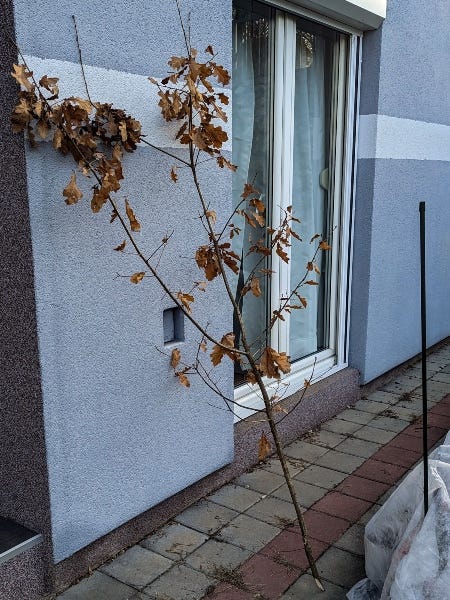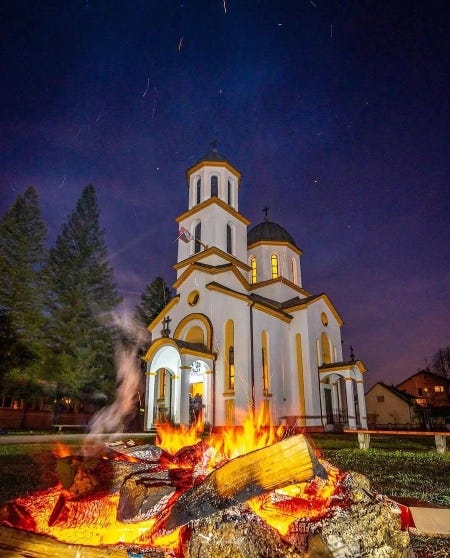It's quite a chilly and frosty morning on 6th January, here in the village.
The sounds of vehicle horns have been echoing for a few hours now (it's 0900 at the moment) across the valley. There is a convoy progressing through every hamlet in my immediate area, and this short video shows it passing our house.
The area I live in is predominantly Serbian Orthodox, and today, for the Serbian Church, it is Christmas Eve, or Badnje veče.
Both Tamara and I are not Orthodox Christians, but we do enjoy being invited to take part and experience the culture of the area where we live.
The evening before Christmas Eve, Tamara’s father cuts an Oak branch and places it in front of the house.
Tamara also makes a special bread, that we take to her parents on Christmas day. It’s called Česnica ⬇️.
Here is a short explainer about Badnje veče.
Christmas Eve, or Badnje veče, is a significant event in the Serbian Orthodox tradition. It is also the first day of the Christmas season and the last day of the Advent season.
On this day, believers gather for a special evening service called a "badnjak svečanost" at their neighbourhood church. The "badnjak," a big oak log, is blessed and set on the church's altar during this rite.
The badnjak symbolises the birth of Jesus.
Orthodox Christians cook a special meal called the "Badnje veče" at home after the service.
Traditional dishes included in this feast include seafood, various vegetables, and roast pig. The feast is intended to be a time of joy and appreciation for the year's benefits.
Additionally, Badnje veče is a time for introspection and spiritual preparation. In order to concentrate on their connection with God and get ready for the arrival of Jesus, many Orthodox Christians fast the day before the festival.
The burning of the badnjak is accompanied by prayers that the coming year brings food, happiness, love, luck, and riches. The log burns on throughout Christmas Day while wishing that the family’s happiness and prosperity be as abundant as the sparks. Badnjak is often symbolically represented by a cluster of oak twigs with brown leaves attached, with which the home is decorated on Christmas Eve.
Badnje veče is a time for relatives and friends to get together and exchange gifts in addition to the religious observances.
Badnje veče is a significant festival in the Serbian Orthodox tradition, celebrated with spiritual observances, customary feasts, and quality time with family and friends.







Serbian Orthodox Christmas Eve - Badnje veče